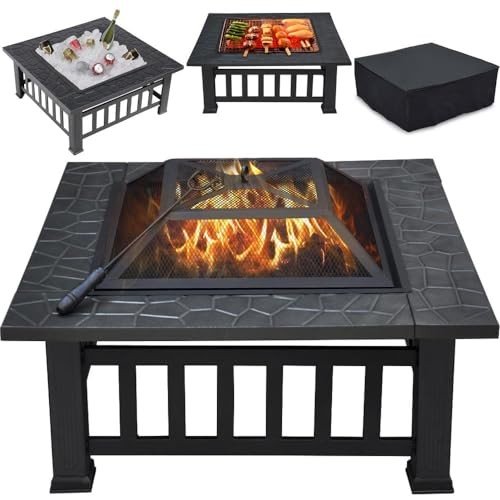Affordable Fireplaces in the UK: A Comprehensive Guide
Fireplaces have actually long been a centerpiece of heat and convenience in homes, offering a cozy environment throughout the colder months. Nevertheless, with lots of families facing financial restrictions, the need for cheap fireplaces in the UK has actually acquired considerable traction. simply click the following page intends to explore numerous economical choices, factors to think about when acquiring, setup details, and maintenance ideas to ensure longevity and security.
Types of Cheap Fireplaces
When looking for a cost effective fireplace, several types are readily available that deal with different budgets and home styles. Below is a list of some common classifications of economical fireplaces:
1. Electric Fireplaces
- Overview: These fireplaces use electrical energy to produce heat and simulate the look of genuine flames.
- Pros: No emissions, simple setup, and adjustable heat settings.
- Cons: Higher electric bills, not suitable for all looks.
2. Gas Fireplaces
- Introduction: Rely on gas or lp to produce real flames.
- Pros: Efficient heat output, instantaneous heat, and often featured push-button controls.
- Cons: Requires gas line setup, which may incur additional costs.
3. Wood-Burning Stoves
- Overview: These traditional fireplaces burn wood logs to produce heat and atmosphere.
- Pros: Lower running expenses if wood is sourced locally, authentic experience.
- Cons: Requires more upkeep, a chimney system, and sourcing fire wood.
4. Bioethanol Fireplaces
- Summary: Use bioethanol to create real flames without being connected to a flue.
- Pros: Portable, simple to establish, and produces little smoke.
- Cons: Limited heat output and can be expensive if utilized frequently.
5. Inserts and Surrounds
- Introduction: Inserts or surrounds are normally added to existing chimney areas to improve or optimize a fireplace.
- Pros: Cost-effective means of updating an old fireplace, increased effectiveness.
- Cons: Initial setup cost might vary, and not all homes work.
Table 1: Comparison of Cheap Fireplaces
| Type | Average Cost (₤) | Operating Cost | Installation Difficulty | Visual Appeal |
|---|---|---|---|---|
| Electric | 100 - 500 | Low | Easy | Moderate |
| Gas | 300 - 700 | Moderate | Moderate to Difficult | High |
| Wood-Burning | 150 - 600 | Low to Moderate | Moderate to Difficult | High |
| Bioethanol | 200 - 800 | Moderate | Easy | High |
| Inserts/Surrounds | 200 - 1,000 | Varies | Moderate | High |
Elements to Consider When Choosing a Cheap Fireplace
When picking a cheap fireplace, numerous aspects should be considered to make sure that the purchase lines up with your home's needs and budget:
Space and Size
- Examine the size of the space where the fireplace will be set up. Larger spaces might require more powerful heating alternatives, whereas smaller sized areas might gain from compact electric or bioethanol models.
Fuel Type
- Pick between electric, gas, wood, or bioethanol based upon schedule, personal choice, and regional regulations relating to emissions and safety.
Setup Requirements
- Consider whether the fireplace requires extensive installation work, such as venting and chimney building, which can significantly increase expenses.
Cost of Operation
- Compute the continuous fuel or electrical power costs to preserve warmth throughout the winter season months.
Visual Design
- Go with a fireplace that matches the existing decoration of your home, whether modern, traditional, or rustic.
Upkeep Tips for Your Fireplace
Once a cheap fireplace is installed, appropriate upkeep is critical for security and durability. Here are some important upkeep suggestions:
- Schedule Annual Inspections: For gas and wood-burning fireplaces, it's necessary to have an annual examination to inspect for gas leaks or blockages in the chimney.
- Regular Cleaning: Dust and preserve electric fireplaces and clean out ash from wood-burning ranges to avoid fire dangers.
- Appropriate Fuel Storage: For wood-burning ranges, store fire wood in a dry area to make sure efficient burning and prevent mold growth.
- Use Quality Fuel: Always use appropriate fuel for gas and bioethanol fireplaces to avoid excess soot and emissions.
- Set Up Carbon Monoxide Detectors: For gas or wood-burning designs, install detectors to guarantee that any leakage of harmful gases is rapidly identified.
FAQs
1. What is the most inexpensive type of fireplace?
Electric fireplaces are typically among the most inexpensive choices, providing a variety of costs that can fit most spending plans.
2. Can I install a fireplace myself to conserve cash?
While some electric and bioethanol fireplaces can be easily established without expert help, gas and wood-burning models normally need installation by a qualified professional to make sure safety.
3. How long do electric fireplaces last?
Electric fireplaces can last for numerous years with appropriate care, typically around 10-15 years, depending on use and the quality of the system.
4. What is the most effective fireplace?
Gas fireplaces tend to be the most efficient, providing instantaneous heat with controlled emissions.
5. How do I understand if my fireplace is safe to use?
Routine assessments, correct cleaning, and guaranteeing that there are no blockages or leakages can assist preserve security in any type of fireplace.
Discovering a cheap fireplace in the UK doesn't indicate compromising on style or security. With a wide array of options offered-- from electric to wood-burning models-- house owners can delight in a warm and inviting atmosphere without breaking the bank. By comprehending the different fireplace types, thinking about essential aspects before making a purchase, and maintaining the fireplace properly, individuals can invest carefully for many years of enjoyment.

